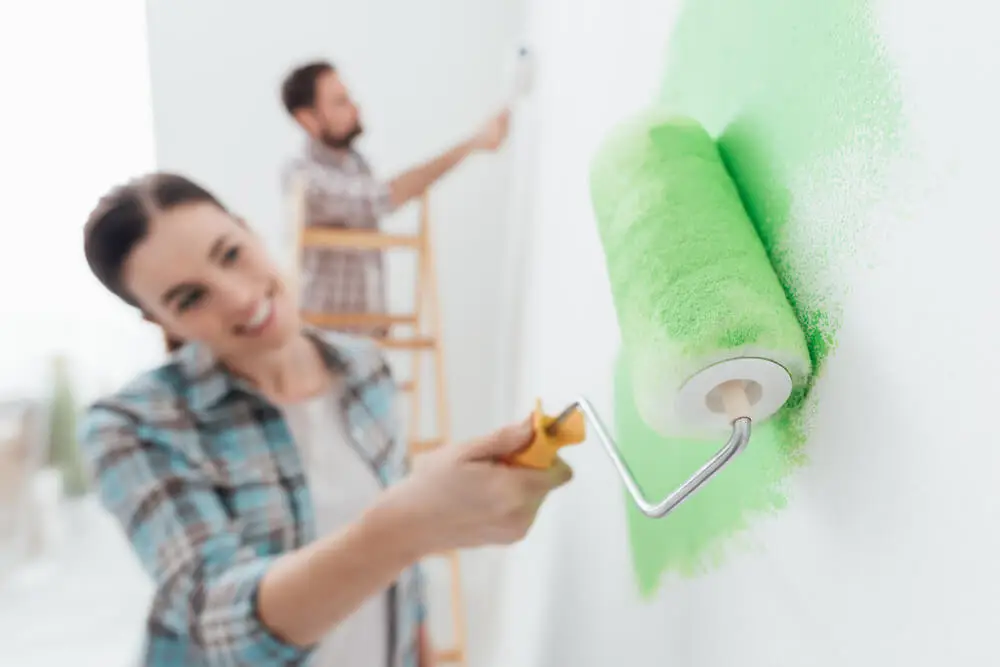Masking Tape: What Is It and What are its Uses?

Masking tape, also known as painter’s tape, is an element made of paper that’s used to delimit and cover areas. Generally, it’s used to protect delicate surfaces while painting, but it has several other uses. Discover some of them here!
This type of tape is one of the most commonly purchased and used, because it has the great advantage of being able to be removed without leaving any stains. In addition, it sticks to all types of materials and doesn’t remove the paint or protective layers that each object has.
Types of masking tape
There are several types of masking tape and you can choose the right one depending on the situation that arises. Each of these versions is mentioned below.
Rice paper tape
This tape is an adhesive that’s very thin, so it’s ideal for decorating walls and canvases. Additionally, it works to protect the edges of floors or walls that you don’t want to get with paint. This tool is also characterized as being resistant to factors such as humidity and UV rays.

Kreep tape for exterior
Kreep tapes are made with rubber; therefore, they’re one of the most flexible types of masking tape and have a high degree of resistance. They’re often used to mask exterior doors or window frames while painting.
They can withstand water and high temperatures. In addition, they retain their adhesion for many days and can be easily removed when finished.
Curved masking tape
This type of tape is indispensable when you want to cover areas that are round or have a bend in them. Also, due to its malleability, it can be used to form figures on any surface.
Low adhesion tape
This is the most suitable type of masking tape for use on delicate objects, as it adheres without problems and can be removed without leaving a trace. In addition, it can be used on paintings that have not yet dried completely.
For this reason, it’s preferred by painters when they have to apply a new coat and need to protect the area they have already worked on.
We think you may also enjoy reading this article: Is it a Good Idea to Paint the Kitchen White?
Uses of masking tape
Masking tape is a must when carrying out works that involve the application of paint; however, it’s also useful in other types of occasions. The following are the multiple uses that can be given to this adhesive material
1. To make frames for photos
When you have some photos that you want to show off in some space, you can create a frame for them with masking tape. This way, you can add a handmade touch to your walls and avoid spending a lot of money buying a picture frame.
2. Write notes
Masking tape is an element on which you can write; therefore, it works to leave a message to someone and stick it on a visible surface.
In addition, it can be used to build a schedule on one of the walls of the room to remind the tasks that are pending.
3. To make artistic works
The masking tape also tends to be very useful at the moment of making crafts. This is because it allows the person to delimit the areas of the canvas that he/she wants to paint and draw perfect forms.
It also works to make geometric figures on canvases and obtain more original paintings without resorting to the use of types of vinyl. Even, the process can be done directly on the wall when what you want is to elaborate an abstract and novel decoration.
4. Eliminate speck residues that remain on clothes
The washing machine sometimes causes clothes to be left with speck residues that are very noticeable. However, the problem can be solved by tapping the affected areas and carefully removing the tape after washing them.
5. For measuring a space
The tape can be used to mark the exact space occupied by a piece of furniture so as not to lose the measurements that were previously calculated with a tape measure. In the same way, during a move, you can use the tape to draw the outlines of each piece of furniture in the new areas and visualize how the space will be organized.
On the other hand, masking tape can also be used to mark the distribution of the pictures you want to hang on a wall.
6. To mark your kitchen containers
In many cases, people deposit and recycle their residue in bins that are located side-by-side. However, it’s often easy to mix them up (or to have confused houseguests). With this in mind, it’s essential to use masking tape that bears the name of each product and helps to avoid confusion.
7. To make games for children
Children are always looking to be entertained and adhesive tape is a great alternative to devise games inside the home. One of the possibilities is to recreate the shape of a race track on the floor and get the child to organize his or her collection of vehicles.
Another option is to use the tape to build a board for the game known as hopscotch. Thus, children can have fun, exercise, and practice numbers without leaving the house.

Tips for using masking tape
Before applying the tape, the area should be cleaned so that dirt, dust, or residue doesn’t affect the adhesive glue. In addition, it’s important to make sure that the element is well-secured and won’t move until the process is finished.
The masking tape should never be cut before applying it to the surface, as some areas may be left unprotected if the measurements fail. In addition, it’s essential to take into account the duration periods of each adhesive so that you can always work safely.
Like this article? You may also like to read: Open Concept: The Decorative Style You’ll Want to Know About
The planning phase is essential when using masking tape
Masking tape is an element that is very successful because it allows to protect and improve surfaces. A planning phase is essential to determine how much adhesive is needed, purchase the necessary quantities, and to be able to complete all runs with the expected results.
In addition, the planning phase is a useful time to evaluate all the tools that are required. Among these, there’s a metal spatula, for instance, which is very useful to reinforce the installation of the tape or to help remove it in a simpler way.
All cited sources were thoroughly reviewed by our team to ensure their quality, reliability, currency, and validity. The bibliography of this article was considered reliable and of academic or scientific accuracy.
- Ferrer J. Preparación de superficies [Internet]. (S.L): Editex; 2014. [citado 22 de junio de 2021]
This text is provided for informational purposes only and does not replace consultation with a professional. If in doubt, consult your specialist.








